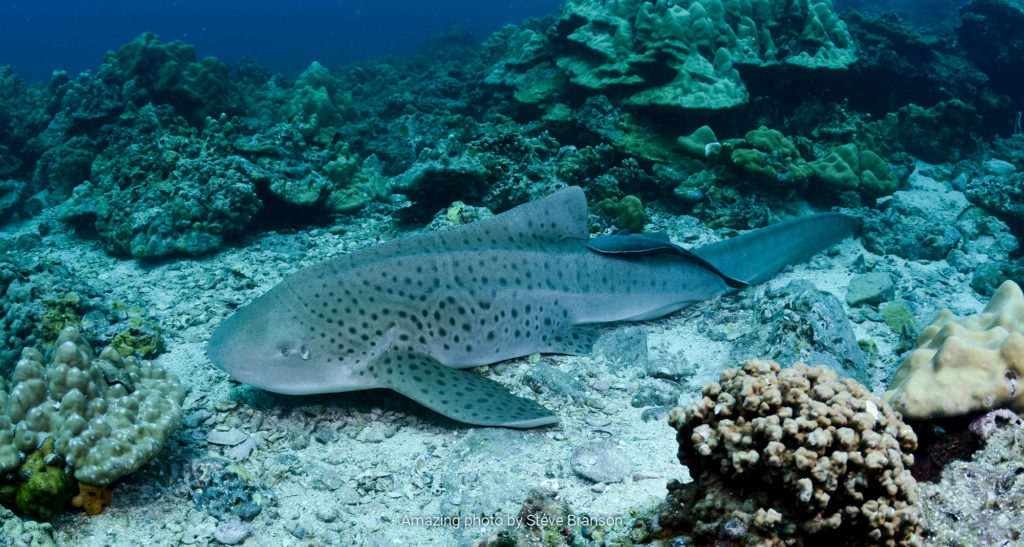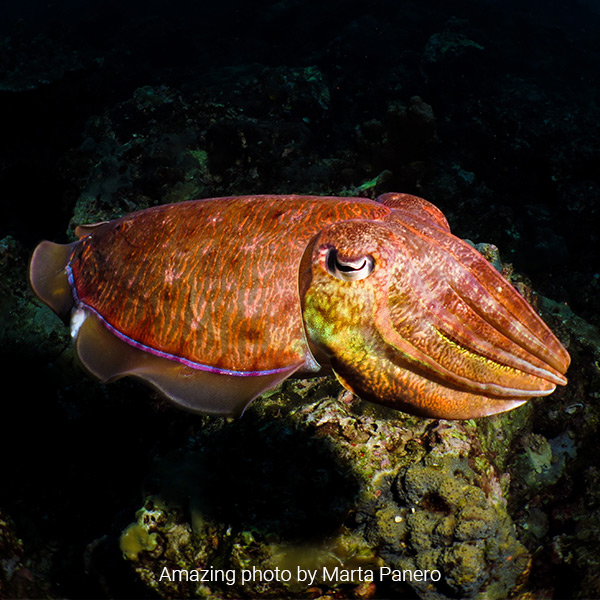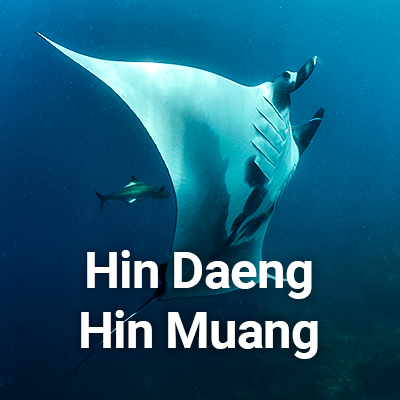Koh Bida
Koh Bida are two islands located south of the Koh Phi Phi archipelago; Koh Bida Nok and Koh Bida Nai. Situated at the south of the island Phi Phi Leh and its famous Maya Bay, where you can enjoy one of the best dives in Phi Phi.
They are at the same distance from Koh Lanta as Koh Haa, so it is regularly visited by Koh Lanta´s dive centers. It is a protected area within the Phi Phi National Marine Park, more popular, due to its location, than the Koh Lanta National Park, but very well preserved. The perfect spot for scuba diving.
The Bida Islands are two limestone rock formations and high walls, which are home to one of the best-preserved coral reefs in Koh Phi Phi. Especially noteworthy are the gardens of soft corals and large fan-shaped gorgonians, and the huge schools of fish that you can find when diving Koh Bida.

It is also a great place for snorkeling, with small shallow bays where you can get up close to the intense life of the reef. A prime spot to swim up close to blacktip reef sharks, large cuttlefish, sea turtles, and countless colorful reef fish. Diving Koh Bida is undoubtedly an experience that you cannot miss.
Diving in Koh Bida is possible during the whole year-round, as the Koh Phi Phi National Marine Park does not close at any time.
Koh Bida Dive Sites

- Suitable for all diving levels.
- One of the best spots.
Koh Bida Nok
Koh Bida Nok is the larger of the two islands and is located further out of the archipelago (“Nok” in Thai means “outside”). It has several dives around the island, all impressive, among which the southern part of the island stands out, where there is a shallow bay that is spectacular, both for its rock formations and for the great diversity of life it houses. It is common to find blacktip sharks patrolling the bay and the rock faces on its eastern side. Large groups of squid also usually rest in this bay. It is also common to see large cuttlefish and octopus hunting, scorpionfish, groupers of various types, different species of reef fish, and impressive formations of hard and soft corals. Koh Bida Nok Bay is perfect for beginner divers due to its shallow waters protected from currents. It is also one of the best places to enjoy snorkeling.
To the south of the bay, a rock tongue extends under the water with vertical walls populated by all kinds of corals. In this area of Koh Bida Nok, it is common to find feeding turtles and authentic fish walls; Hundreds and hundreds of silver trevallies and yellow snapper concentrate in this area to feed. It´s common to find yourself swimming in the middle of a ball of fish that does not let you see beyond. Just beautiful!
Koh Bida Nok is a perfect place for freediving. Its tiered bottom, and its biological diversity, make this dive site highly appreciated by freedivers.

- Suitable for all diving levels.
- Yes.
Koh Bida Nai
Koh Bida Nai is the smaller of the two islands and is located further into the archipelago (“Nai” in Thai means “inside”). Its east face presents a shallow reef that progressively drops from 4m to 20m. This reef is full of anemones, and it is very special because it is one of the few places where we can find the fire clownfish, one of the most beautiful and charming of the family of clownfish. It is also common to find zebra and leopard sharks resting on the sandy bottom at a depth of 20-25m.
The west side of the island has a dive on a vertical rock wall where Gorgonian fans grow. It is a place full of small caves, blocks, and passageways where we will find large schools of yellow snappers, large moray eels, pufferfish turtles, and barracudas.
The two dives at Koh Bida Nai start and end at the same point; A shallow rock bay that is an ideal spot for snorkeling or taking pictures.
If you have a good level of air consumption and control of your buoyancy, it is possible to circumnavigate Koh Bida Nai in a single dive of 60 minutes. Quite challenging for advanced divers.

- Suitable for all diving levels.
- Yes.
Hin Bida
Less famous than Bida Nok and Bida Nai, Hin Bida is a rock formation located southeast of the Vida Islands. If the tide is low, you will be able to see its top standing up from the water for about a meter. If the tide is high, the rock will be totally submerged. Hin Bida is one of our favorite dive spots.
It has a very characteristic shape, similar to the foot of a hen or the footprint of a dinosaur; From the highest point, the rocks descend towards the bottom in a shape that resembles three fingers of a hen, ending in a sandy bottom about 20m deep.
The Hin Bida diving is special and very different from the rest of the dives in the area. The rocks create countless holes and caves teeming with life. It is home to countless numbers of shrimp of different species, it seems that they are not there, but once you spot one, you won´t stop seeing more and more during the dive. It is also home to thousands of glassfish that carpet the entire reef seeking protection. There are so many glassfish that sometimes it´s impossible to see the reef that is only a few centimeters away, and so you can see that we are not exaggerating, below we leave you a video so you can check it.
Protected from the currents, between the “chicken fingers” it is common to find leopard and zebra sharks resting on the sandy bottom. This is the dive site where you are most likely to spot these quiet sharks.
Other Hin Bida inhabitants are Kuhl’s rays, large cuttlefish, moray eels, damsels, and significant numbers of crinoids.
Hin Bida is also a great place for quality snorkeling. The top of the reef is 2-5m deep and is the perfect place to explore reef life, and watch our fellow divers pass below.
Other Dive Sites
Book your dives online
Book your dives online at least one week in advance and get a 10% discount!

In Hidden Depths Diving we firmly believe that an eco-responsible diving model is possible. We strive every day to offer you a different, familiar, environmentally friendly, safe, and fun diving experience. Where you will feel part of a great family of divers who, in addition to enjoying diving, we fight so that future generations can enjoy the same wonders that we dive today.



